Boston’s public transit system has seen many changes since my first visit there in 1967, but the variety of equipment operated there means it’s always worth a trip.
Boston pioneered the use of color-coded transit lines, but unlike Chicago’s, their equipment is not shared between lines. There are differences that keep Boston’s Red, Blue, and Orange Line rapid transit cars from running on each other, and the Green Line is the most different of all.
On the Green Line, the venerable PCCs and the ill-fated Boeing-Vertol LRVs have given way to today’s modern fleet of Type 7 and Type 8 trolleys, the latter with low floors. Often, Boston mixes 7s and 8s in trains so that at least some portion of each train is handicapped accessible.
It’s hard to believe, but many of the Type 7s, which first ran in 1987, are really showing their age with a lot of surface rust from those hard Boston winters. This was my first experience riding the Type 8s, and I found them to be likable, attractive cars as well.
Boston continues to use PCC streetcars, as it has for nearly 75 years, just not on the Green Line. PCCs provide all the service on the Ashmont-Mattapan line, a prototypical “light rail” line that dates back to the 1920s. Technically, this is part of the Red Line.
In addition, Boston is one of a handful of cities that still use trolley buses. I was sorry to see them go from Chicago more than 40 years ago, so it was a thrill to ride one again this week.
Railfans tend to like “roster shot” types of photographs, with nary a person in sight, but the Boston system is used daily by large numbers of people, and their interactions with transit vehicles can also create interesting pictures. Boston is a very friendly city, and if you have not experienced it, consider visiting sometime. You may find yourself coming back time and time again, as I have.
Meanwhile, I hope that you will enjoy these images as souvenirs from my recent trip. They were taken on August 14-17, 2014. Boston is the kind of city that fits me to a “T!”
-David Sadowski

A mass of humanity at Park Street.
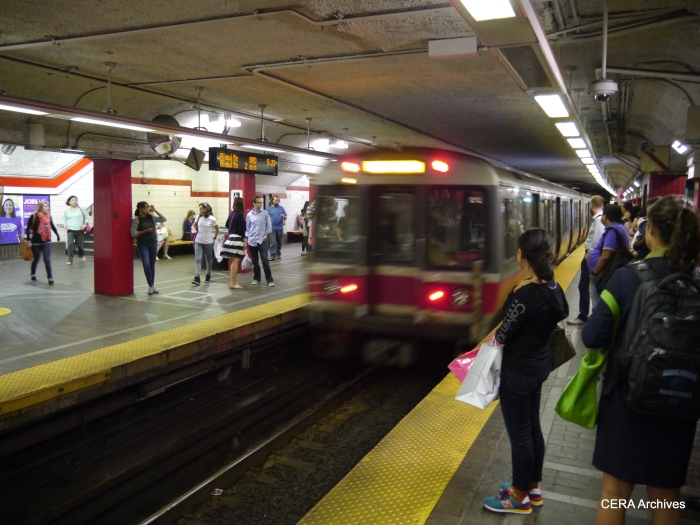
An Alewife-bound Red Line train at Park Street.
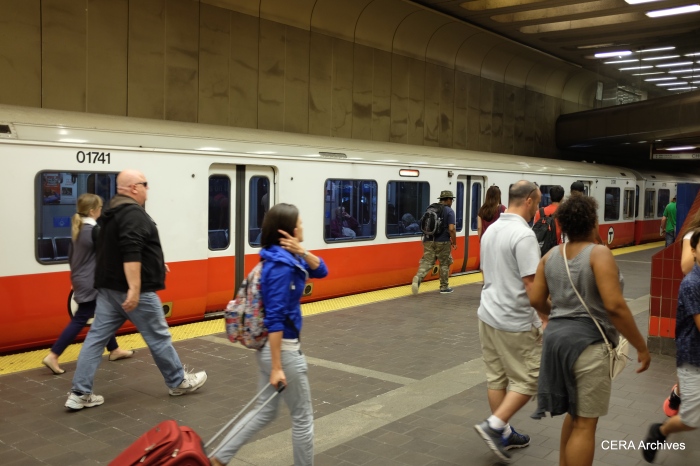
The Red Line at Alewife.
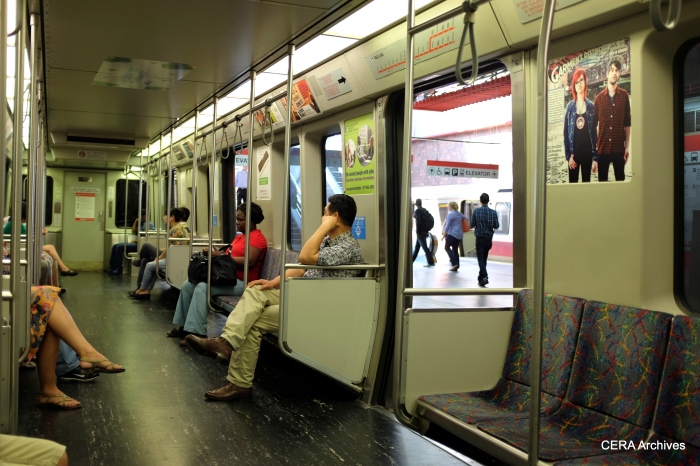
Inside a Red Line car.

Boarding the Red Line at Alewife.

The classic Harvard Square “T” station subway entrance lives on as a magazine stand. The current subway entrance is nearby.

Harvard Square.

The Harvard Square bus tunnel.

The bus tunnel provides off-street loading and unloading in the busy Harvard Square area, and is also partly responsible for the continued use of trackless trolleys in Boston.
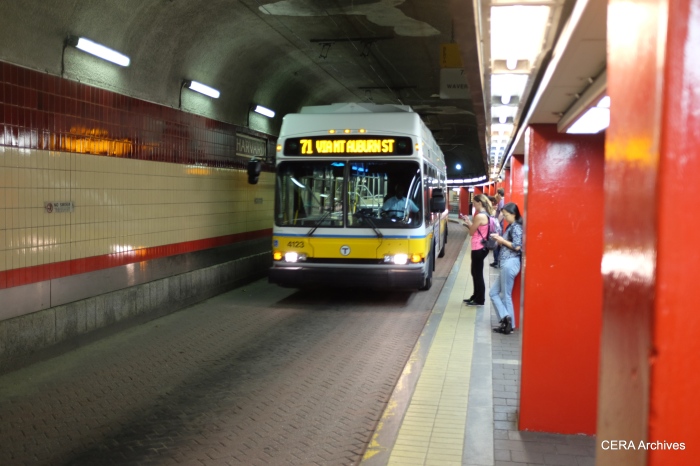
A Route 71 trolley coach in the Harvard Square bus tunnel.
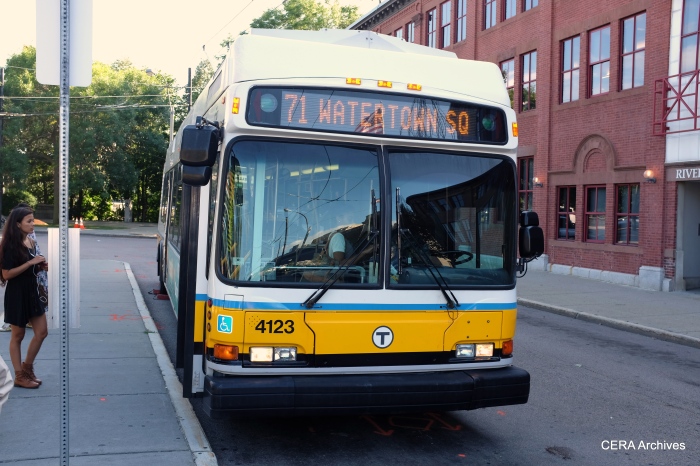
A Route 71 trackless at the end of the line in Watertown.

The back end of an MBTA Route 71 trackless along Mt. Auburn.

MBTA’s trolley coach garage on Mass Avenue.
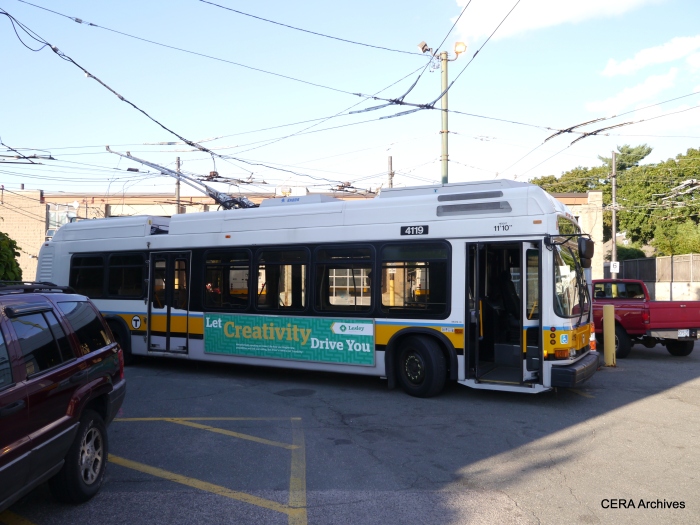
One of MBTA’s trackless trolleys at the ir garage along Mass Avenue.

A Type 7 car in profile.

MBTA full-size mockup for a “Type 6″ car, circa 1968. You can see traces of this design in the Type 7s from the 1980s.
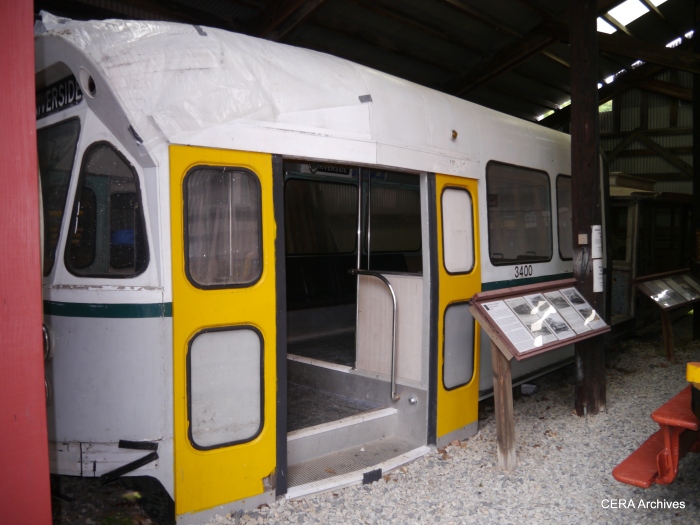
A fuller-length view of the same mockup. Instead of developing this car, MBTA and MUNI collaborated on the design of the Standard Light Rail Vehicle in the early 1970s.

Waiting for those doors to open on a low-floor Breda car.

The classic trolley shelter at Coolidge Corner.
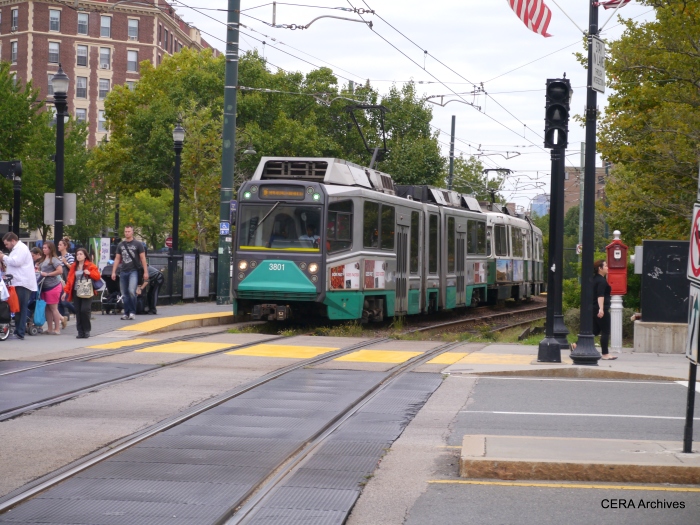
Waiting for the light to change at Coolidge Corner.
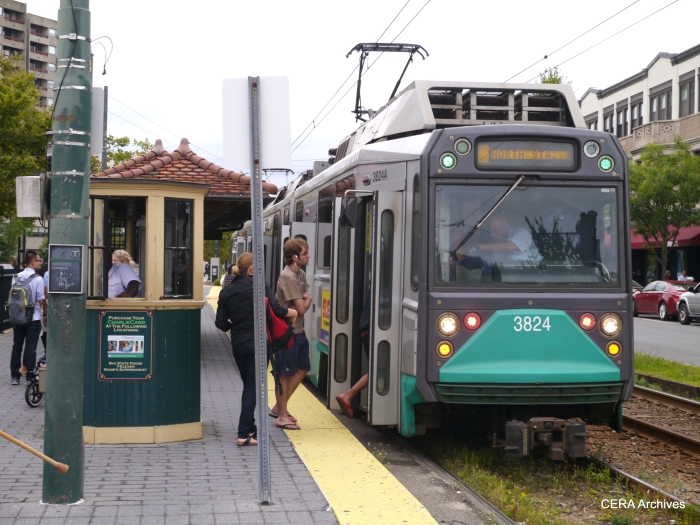
Passengers board a low-floor Breda at Coolidge Corner.
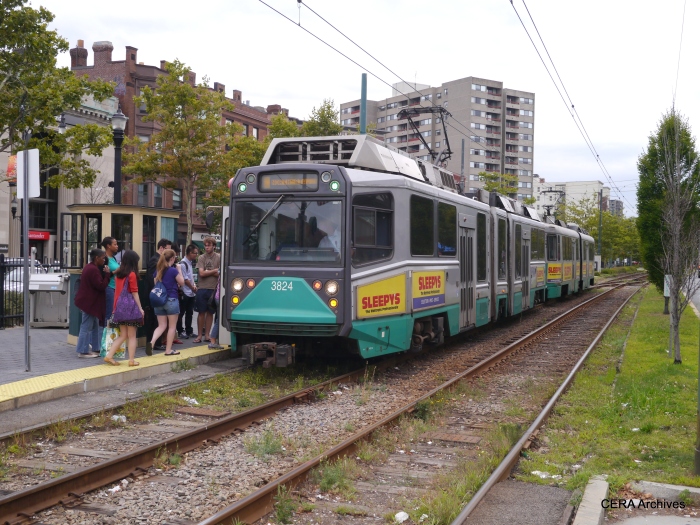
Bredas at Coolidge Corner on the MBTA Green Line “C” branch.
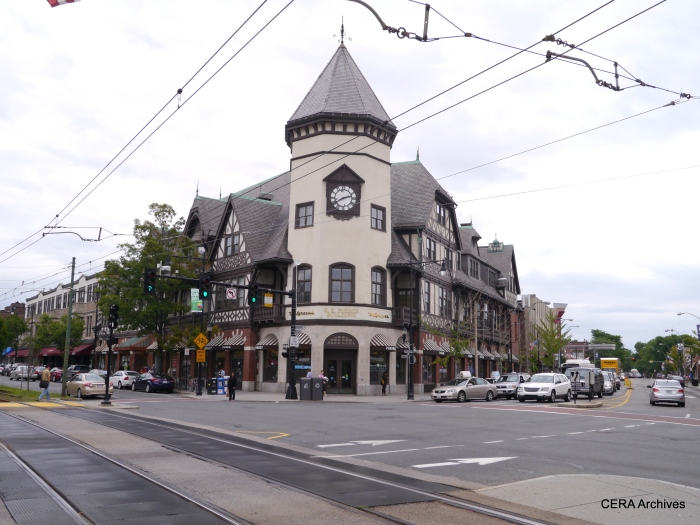
Coolidge Corner is a very picturesque neighborhood.
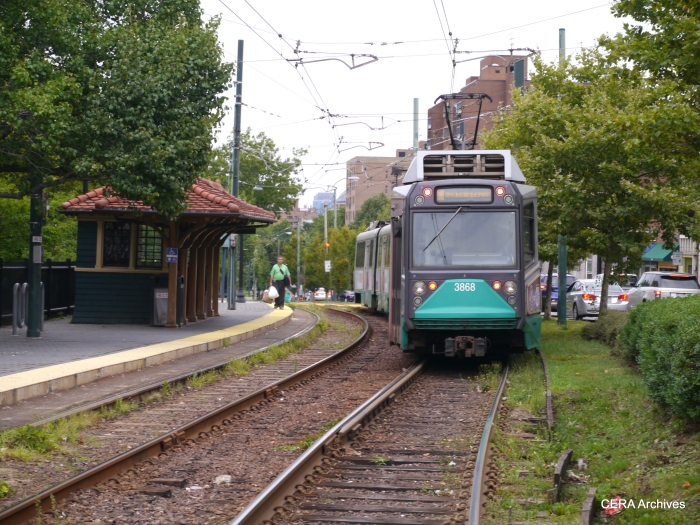
The old and the new at Coolidge Corner.
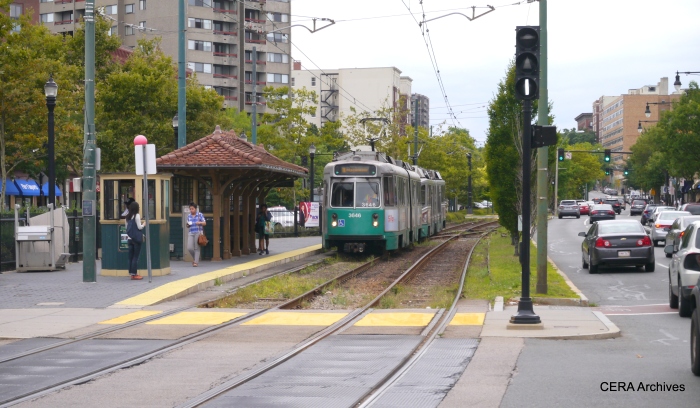
The MBTA’s Beacon Street line has always been one of my favorites.
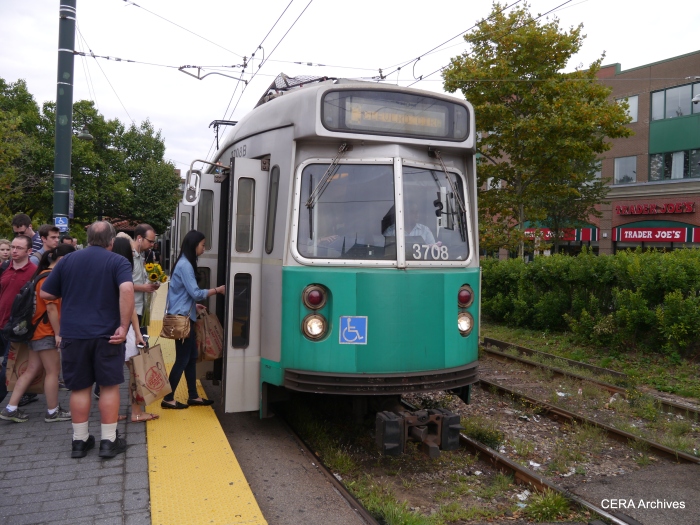
Boston’s “Type 7″ cars, to my eyes, are a cross between a PCC and the Boeing-Vertol LRVs.

Night shot, outbound at Coolidge Corner.
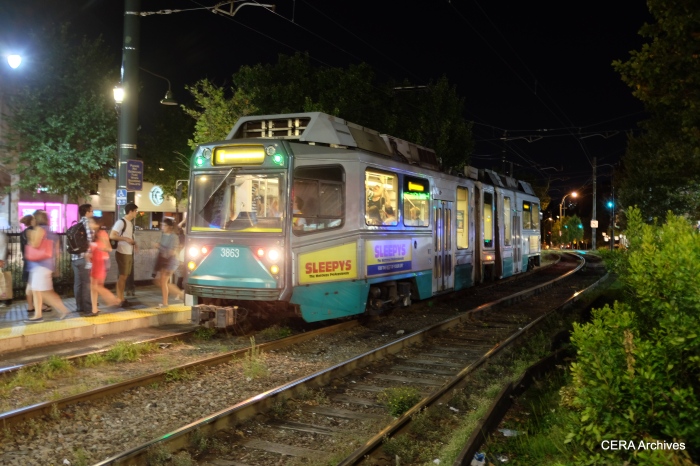
Night shot, inbound at Coolidge Corner.
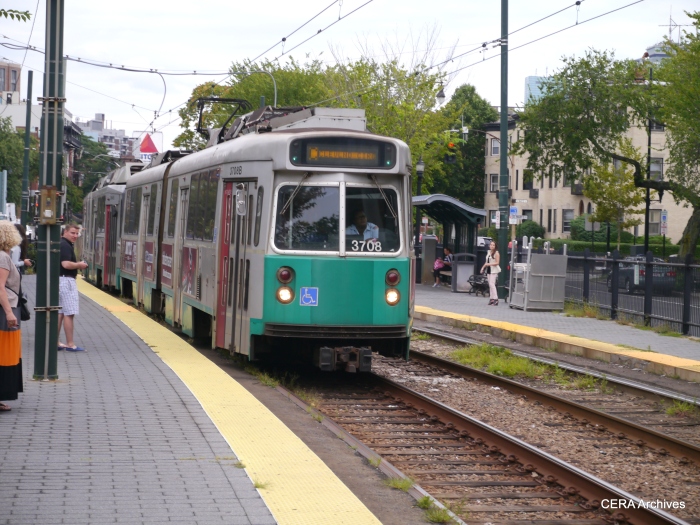
A Green Line train, led by a Type 7 car, makes its first stop after emerging from the subway tunnel.

The Citgo sign has long been a Boston landmark, as was the Cities Service version before it, standing behind the subway portal on Beacon.

Car 3850 is one of the MBTA’s low-floor “Type 8s,” delivered between 1999 and 2008.
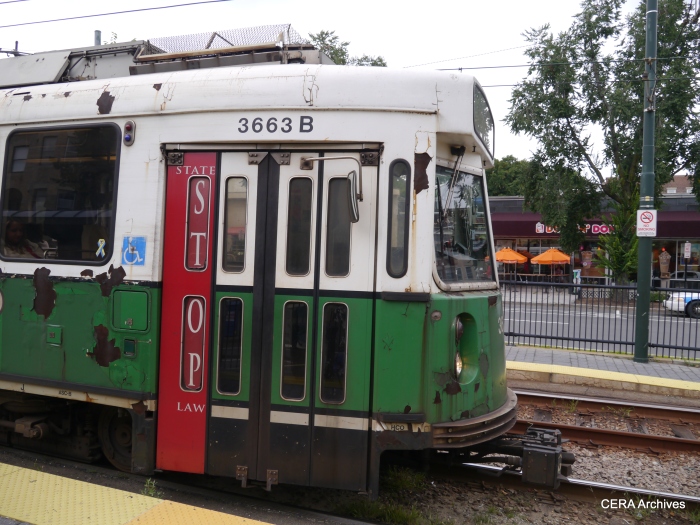
Boston’s fleet of Type 7s were built by Kinki-Sharyo and entered service in 1987. After more than 25 years these cars are really showing their age.

Type 7 interior.
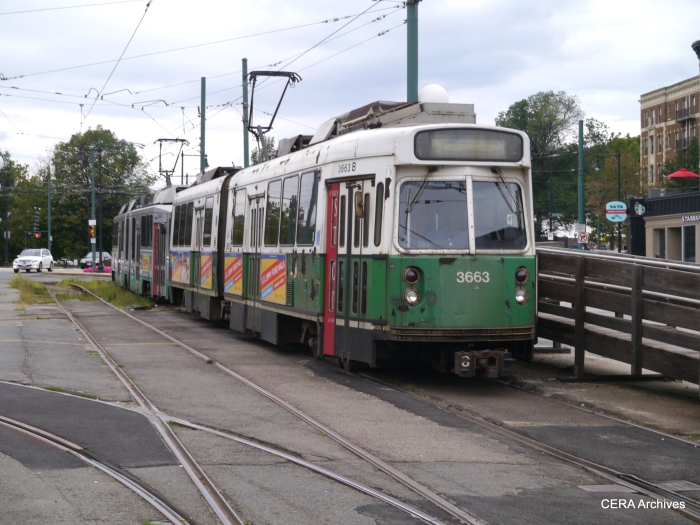
A two-car rain at the end of MBTA’s Green Line “C” route at Cleveland Circle.

Workers switching a two-car train for the return trip from Cleveland Circle.
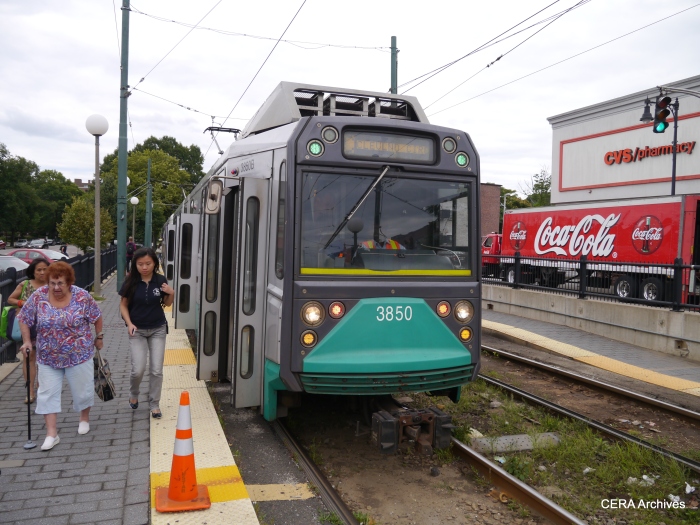
Bostons Type 8s are handsome cars. Despite many initial difficulties, their reliability has been greatly improved.
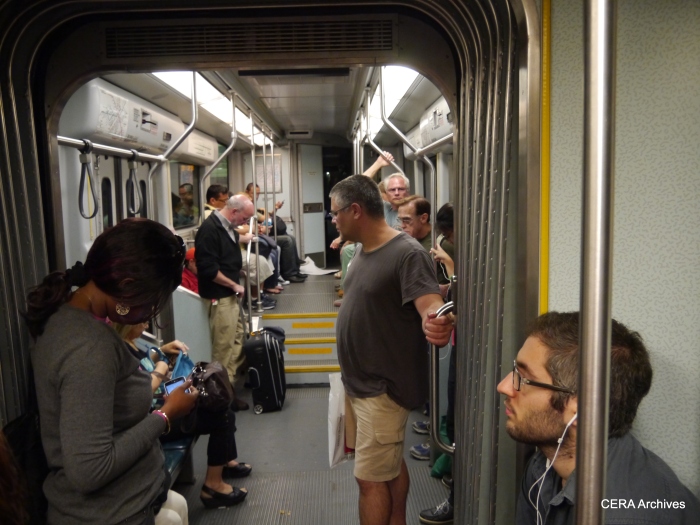
The interior of a Type 8, showing how portions are low-floor and thus, handicapped-accessible.

A train prepares to stop in the Green Line subway.

A Type 7 car in the Green Line subway.

Getting off the Red Line at Ashmont. Some of these riders will continue South via PCC.

PCC 3260 at Ashmont. Although none are visible in this photo, these cars actually carry lots of passengers.
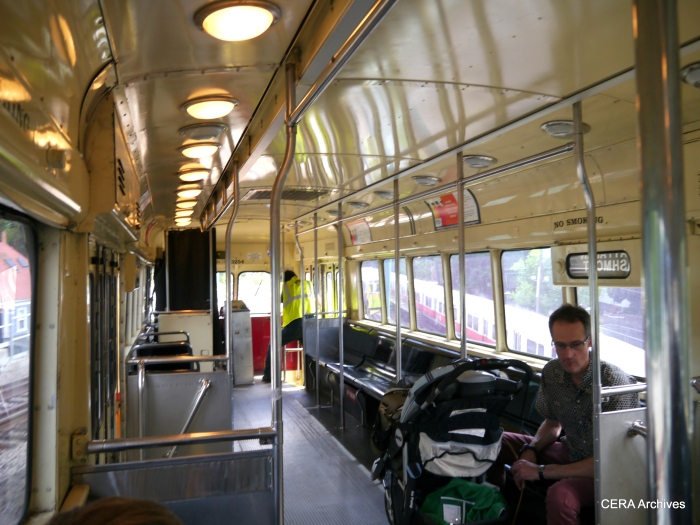
Interestingly, only one bank of lights appeared to be in use in the PCC interiors.

Except for the roof-mounted air conditioner, you’d be hard-pressed to tell if this picture was taken in 1964 or 2014.
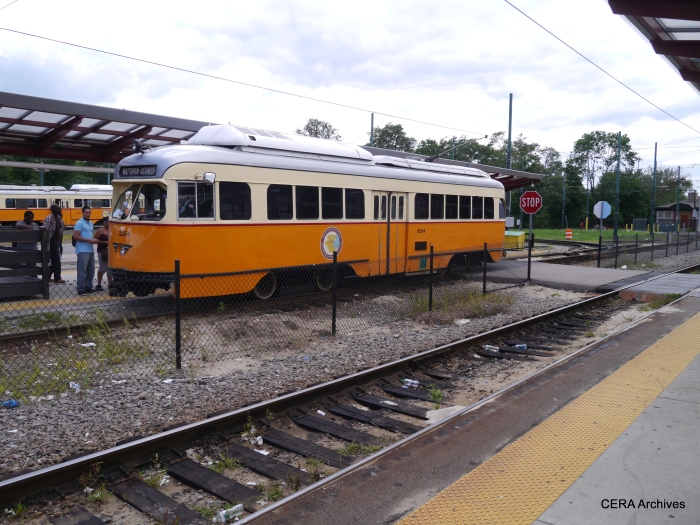
The air conditioned PCCs really look nice in classic orange and white. With their sealed windows, they remind me of Boston’s “picture window” PCCs, which were cars 3272-3321, all now retired.

PCC 3230 picks up passengers at Mattapan.
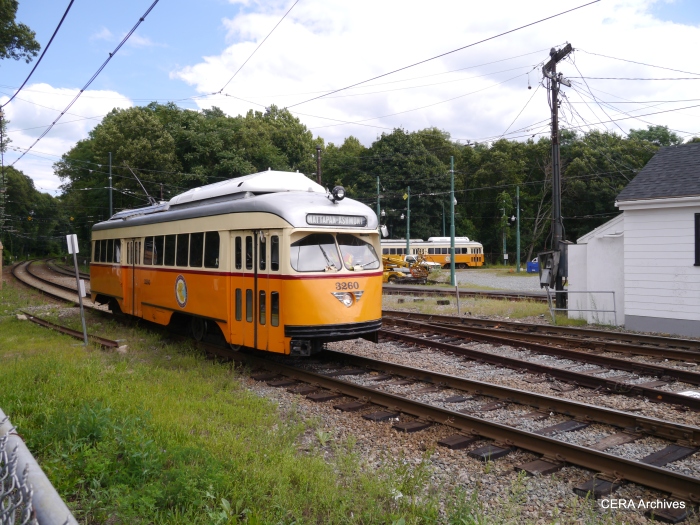
Car 3260 approaches the Mattapan terminal.
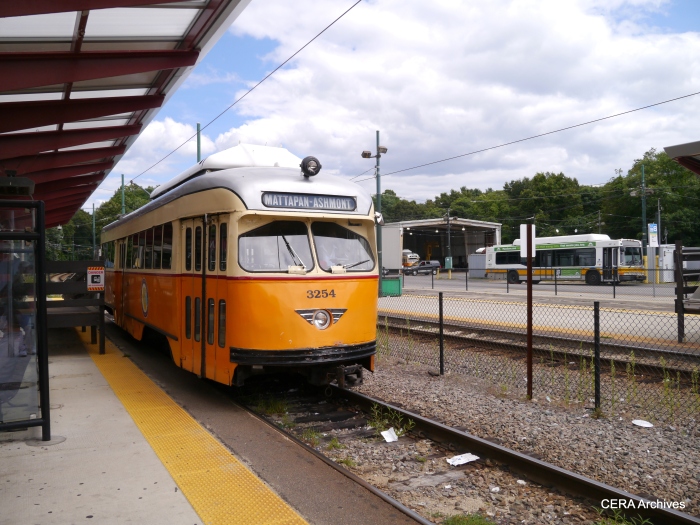
PCC 3254 arriving at Matapan.
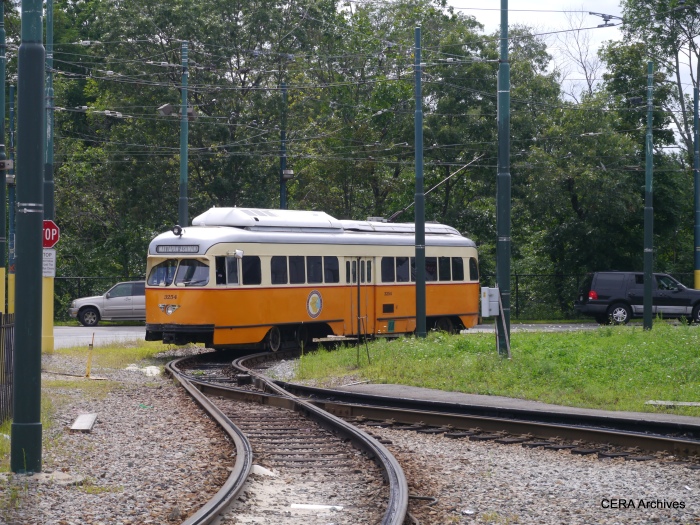
A PCC negotiates the turnback loop at Mattapan.
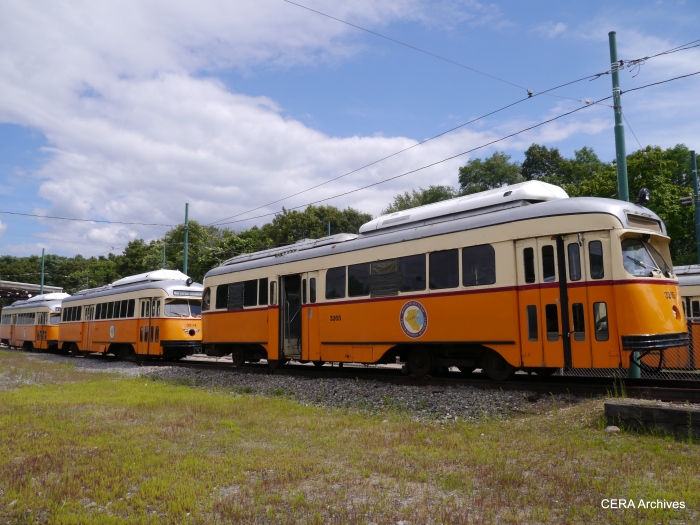
PCCs at Mattapan awaiting their turn in service. PCCs have been in continuous service in Boston for nearly 75 years.
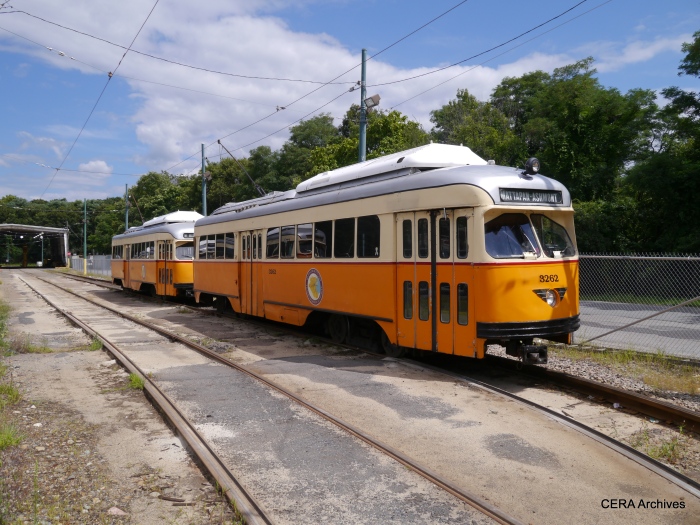
Two of the PCCs assigned to Ashmont-Mattapan service, showing their roof-mounted air conditioning units.
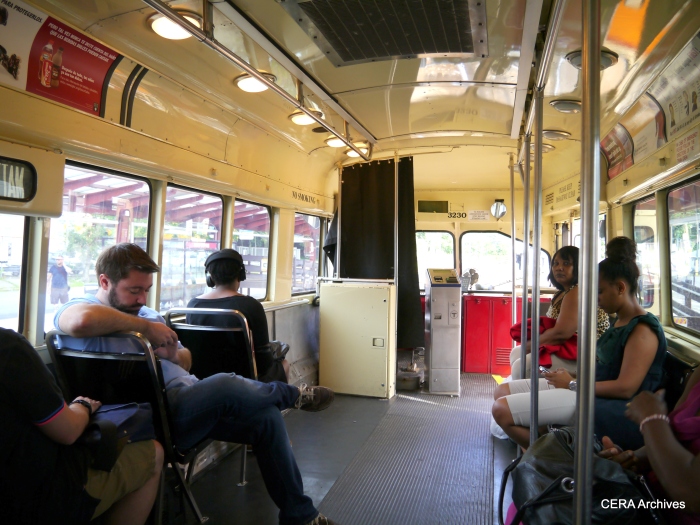
A PCC interior on the Ashmont-Mattapan “high speed trolley.”
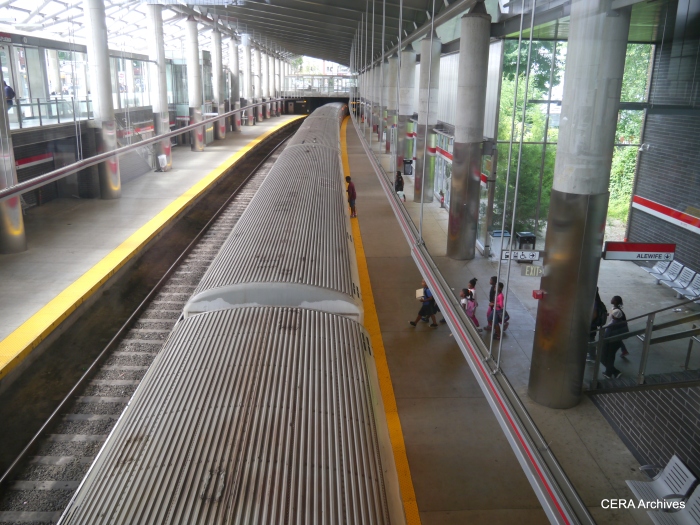
A Red Line train ready to depart at Ashmont.

Boston’s famous giant tea kettle near Government Center dates to 1873 and holds 277 gallons of water. Why not visit Boston, where something big is always brewing!